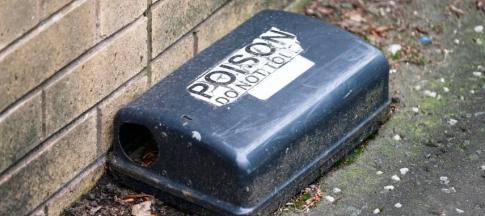Woodworm can cause damage to your home and furniture if left unchecked, but the good news is it can be treated.

The sooner the problem is caught the better, so we’ve put a guide together to help you work out if you have woodworm in your home or furniture, how to get rid of them and how to stop them coming back again.
What are the signs of woodworm?
If you’re not sure whether you have woodworm in your home, there are a few telltale signs to look for that will help you spot an infestation.
Seeing one of these signs by itself isn’t necessarily a cause for concern, but if you see several, it could be worth calling out a professional who can confirm whether or not your home has active woodworms.
1. Small holes in wooden surfaces: If you spot small, round holes in wooden surfaces within your home, this could be a sign that woodworms are present. The holes tend to be approximately 2mm in diameter, and similar in appearance to the holes on a well-used dartboard.
2. Powdery dust: Woodworms excrete a fine, powdery dust known as frass. You may find this on or near wooden furniture, often surrounding the small holes described above. These two signs in combination are a strong indication that you have an active woodworm infestation.
3. Crumbly wood edges: If the edges of floorboards, joists and other wood within your home show signs of crumbling, this may be a sign that a woodworm infestation has been active for some time.
4. Beetles surrounding timber: The name woodworm describes several species of beetle larvae, including:
- Woodboring weevils
- House longhorn beetles
- Common furniture beetles
If you spot the adult insects in your home, there’s a chance their worm-like larvae are feeding inside your wooden furniture, floorboards or joists.

Is woodworm a serious problem?
If you think you might have woodworm, don’t panic. The problem isn’t necessarily a cause for serious concern and can usually be improved with simple household products.
More advanced cases of woodworm can affect the structural integrity of timber. In the case of joists and other wooden supports, leaving the problem untreated might lead to widespread damage within your home.
It’s important to deal with woodworm as soon as you can. Although it usually takes years for woodworm infestations to cause substantial damage, it’s possible the insects have been active for longer than you think. If you’re at all worried, play it safe and get an expert to check your property.
The best woodworm treatment
Before you decide on the best course of action for getting rid of woodworm, you’ll need to understand the extent of the problem. Check all the timber in your home carefully, including wood that isn’t exposed within the living area of your home (for example, wooden beams in lofts and basements).
Look for the signs of woodworm mentioned above, taking particular note of areas with a large number of holes or that are showing signs of deterioration.
In less severe cases, you may only need to treat the surface of the wood that has been affected by woodworm. Woodworm treatment spray can be bought from specialist sellers, or you can hire a professional to carry out the treatment for you.
If the signs of woodworm have you worried, it’s a good idea to ask a qualified woodworm surveyor to inspect your home to work out the extent of the damage. Treatment of serious woodworm infestations may require more intensive chemical treatments, fumigation and replacing damaged timber.
How to prevent woodworm returning
After you’ve dealt with a woodworm infestation, the last thing you want to see is signs of the insects returning. Inspecting the wood in your home regularly (around once a month) for the common signs of woodworm will allow you to deal with returning insects swiftly and efficiently.
To prevent the pests from reentering your home and causing further damage, you may wish to treat the wood in your home with an insecticide. When doing this, wear protective clothing including a mask and goggles, and take care to stop children and pets from coming into contact with the treated surface.
As a more general precaution, make sure your home is well heated and ventilated to deter woodworm and other pests from settling. They tend to prefer humid environments, so opening up windows regularly will help to put the bugs off.
Is woodworm damage covered by insurance?
Damage caused by woodworm is rarely covered by home insurance. At Admiral it’s listed under the general exceptions section of our home insurance policies, along with other gradual and preventable problems such as rust, corrosion, insects and vermin.
Home insurance is intended to protect you against more serious and unpredictable threats such as floods, fires and theft. Woodworm, on the other hand, is generally easy to deal with by following the steps outlined above. If in doubt, contact a pest removal company that specialises in dealing with woodworm.


